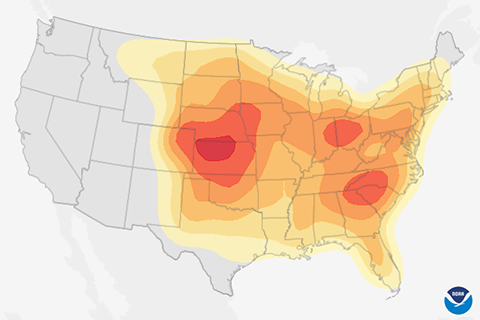
April showers bring May flowers, but what does June bring? History says mid-to-late June brings a higher probability of severe weather across much of the contiguous United States.
Includes natural changes (cyclic variability, volcanic eruptions, solar output) and human-caused changes (due to GHG emissions and land use changes)

April showers bring May flowers, but what does June bring? History says mid-to-late June brings a higher probability of severe weather across much of the contiguous United States.

For New Englanders, the saying “as American as apple pie” may as well be “as New England as lobster.” But warming sea surface temperatures from climate change are forcing populations of the American lobster to higher latitudes than ever before—and upending fishing communities on the New England coast.
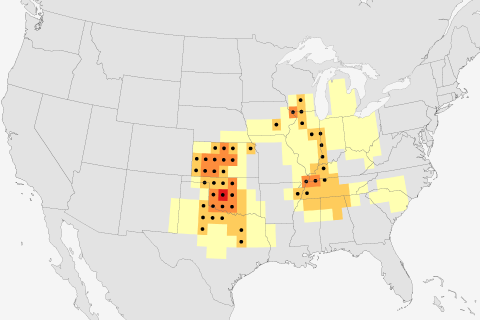
Currently, the risk of regional-scale tornado outbreaks is predictable only about 7 days in advance. But NOAA scientists report that sea surface temperatures in the tropical Pacific may provide a month or more of advance warning of an elevated risk for tornado outbreaks.

Global warming is one symptom of the much larger problem of human-caused climate change.
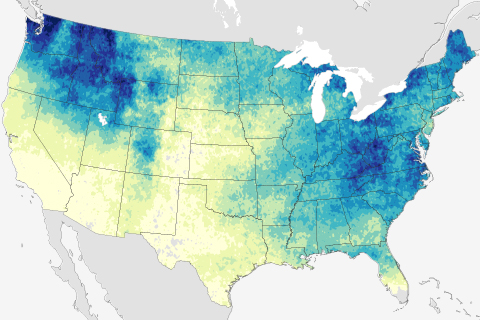
According to the 2009 National Climate Assessment, heavy downpours have increased in frequency and intensity during the last 50 years. Models predict that downpours will become still more more frequent and intense as greenhouse gas emissions and the planet’s temperature continue to rise.

Concentration of carbon dioxide is about 1.4 times what it was before the Industrial Revolution. How much and how fast will Earth warm if carbon dioxide concentrations double the pre-industrial?
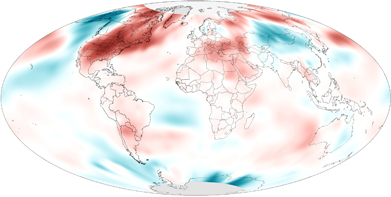
How do we know we can trust the historical surface temperature record? How do we know the rise in carbon dioxide in the atmosphere comes from fossil fuels? Did global warming stop in 1998? Get answers to these and other frequently asked questions.

The most likely explanation for the lack of significant warming at the Earth’s surface in the past decade or so is that natural climate cycles caused shifts in ocean circulation patterns that moved some excess heat into the deep ocean.
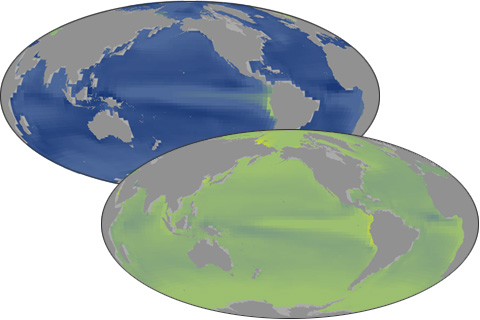
Rising concentrations of carbon dioxide in the air lead to more acidic seawater. More acidic water corrodes minerals that many marine creatures rely on to build their protective shells and skeletons.
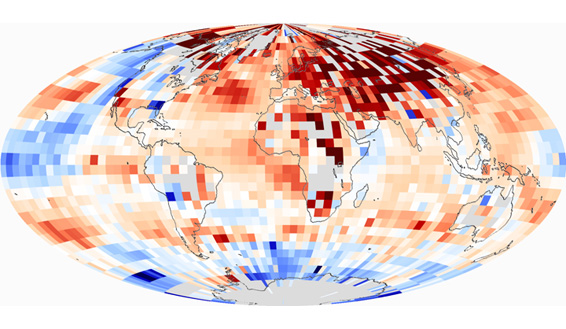
Each of the last three decades was warmer than all earlier decades in the instrumental record, and each set a new and statistically significant record, culminating in the 2000s, which was the warmest decade of all.